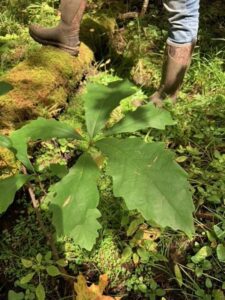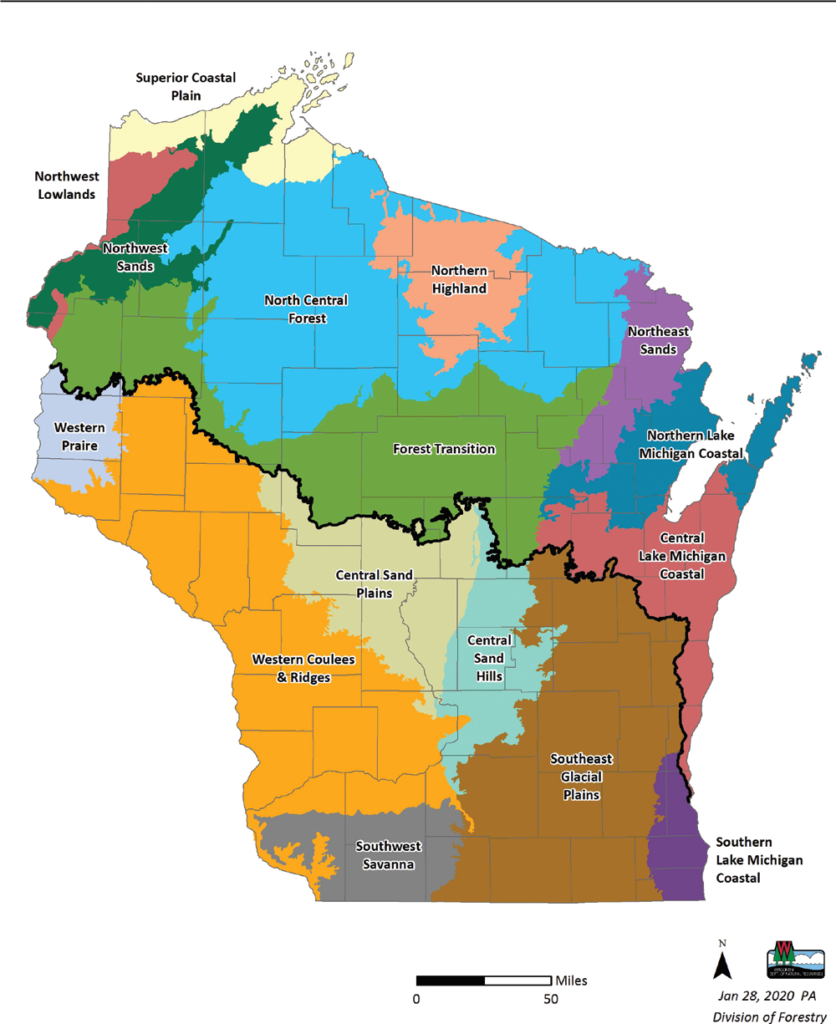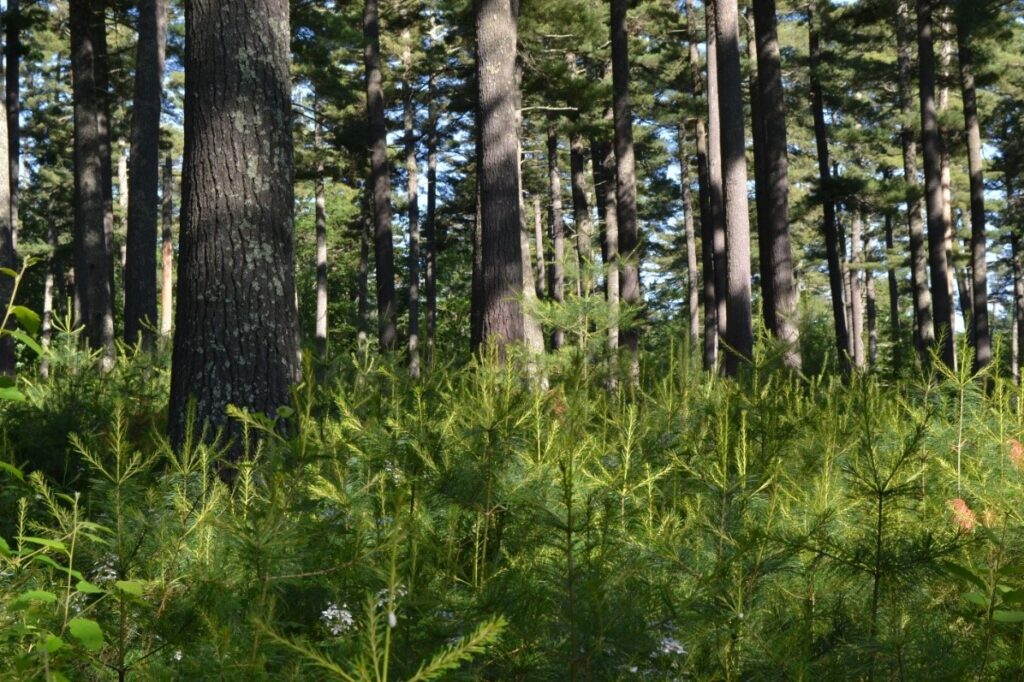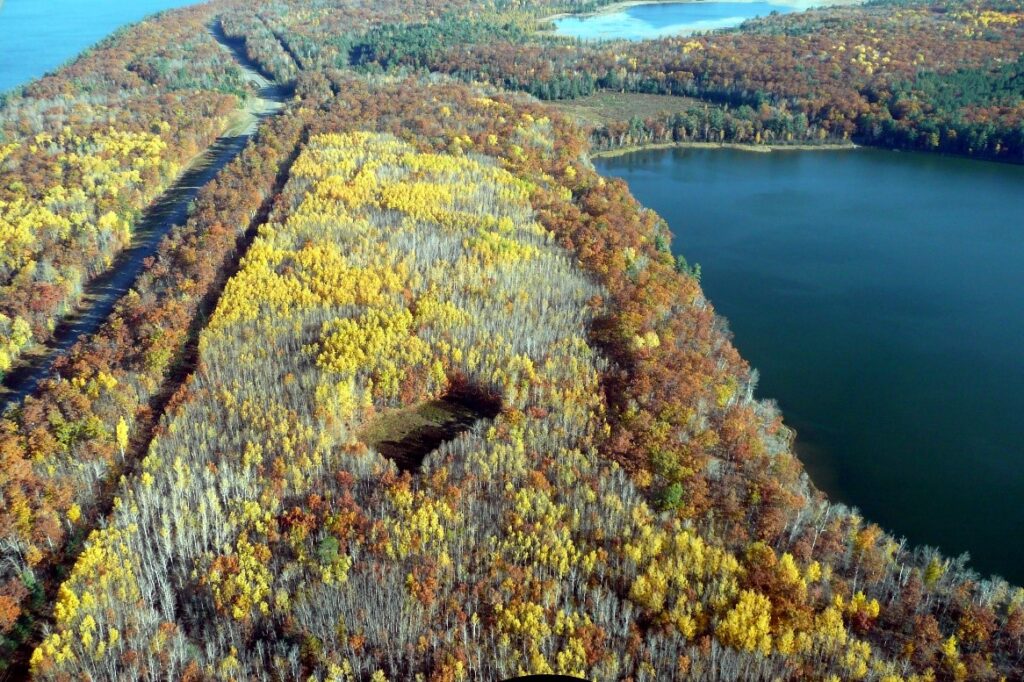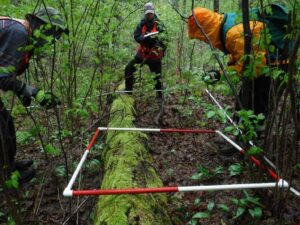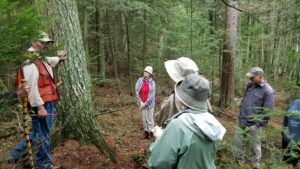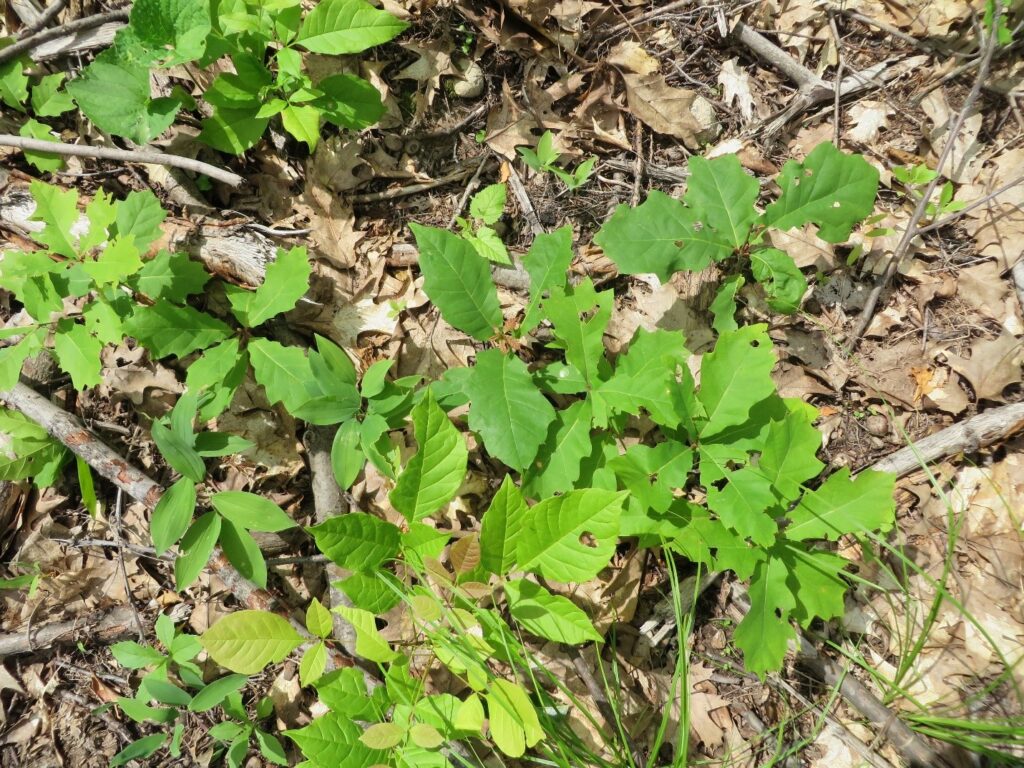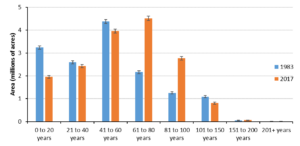The following was adapted from a Wisconsin Natural Resources magazine article.
By Colleen Matula, Wisconsin Department of Natural Resources (DNR) Forest Ecologist/Silviculturist and Patricia Alexandre, Former Forest Ecologist/Silviculturist
Wisconsin’s Forest Habitat Type Classification System (FHTCS) is an ecological classification tool developed in 1988 by John Kotar, a former scientist and instructor at UW-Madison. The FHTCS is based on repeatable patterns of forest understory plants present across similar sites.
Plant composition and growth are determined by site factors, including soils, topography, landform, hydrology and disturbance history. Together these factors represent the foundation of each unique habitat type.
Habitat typing helps foresters make decisions on the ground. This science-based tool can confidently predict how the forest will respond to different management treatments such as thinning, harvesting, and prescribed burning.
Each year in June, when understory plants are in bloom and easy to identify, new foresters from the Department of Natural Resources, county forests and other organizations receive two-day training on the habitat classification system. Continue reading “Seeing the Forest for More Than Just Trees”

